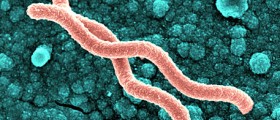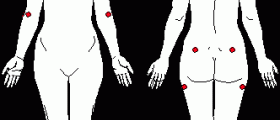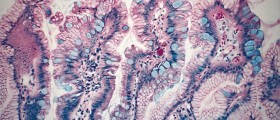
Sweet syndrome or acute febrile neutrophilic dermatosis is one of conditions associated with fever. This condition may appear as mild complication after some respiratory diseases, but it can also cause aggressive neutrophilic process due to some inflammation or even malignancy. Women are about 15 times more likely to develop this condition than men, apart from Sweet syndrome associated with malignant changes, which affects both women and men.This condition is not very common, but most cases are benign. Just 10 to 20% of all reported Sweet syndrome appeared to be associated with malignant changes. In general, if the cause of the problem is not malignancy, prognosis is good, although some people may have difficulties with recurrent skin problems and painful sensations. In other cases, prognosis depends on the cause of the problem.
Causes and Symptoms
Sweet syndrome is actually form of hypersensitivity reaction, usually provoked with infections, inflammations, vaccination, exposure to some drugs or by certain hematologic disease. Neutrophils and endogenous cytokines (immune cells in the body) have been proven to have a significant role in the development of this condition. Some studies speculate that tumor necrosis factor may also play the part in this condition, as well as type 1 helper T cells.Acute febrile neutrophilic dermatosis is characterized by sudden development of papules and nodules on the skin. In most cases, these skin problems appear to be tender and red to purple in color and they could combine into plaques. Commonly affected parts of the body are the face, neck and the arms. As mentioned, this condition is often followed by fever and peripheral neutrophilia (increased number of neutrophils).
Besides the skin, this condition may also affect the lungs and kidneys. Treatment Options
Skin lesions may indicate some underlying disease and require urgent consultation and diagnosis. Sometimes, Sweet syndrome may be provoked by the use of various drugs, while in some women, this condition is also found to be associated with pregnancy.
Oral corticosteroids are usually successful to improve or completely remove the symptoms, but treatment must include proper management of underlying cause of the problem. This condition should be treated or symptoms may last for several weeks or even months. However, sometimes, Sweet syndrome could improve even without any therapy, leaving no scars on the skin.
This condition is known to reoccur quite often and sometimes no one can tell how long it could last. Sweet syndrome linked to malignancy may be presented as ulcers or some other changes on the skin and it may look like pyoderma gangrenosum. These bullous and ulcerative problems are known to be unresponsive to treatment.

















Your thoughts on this
Loading...